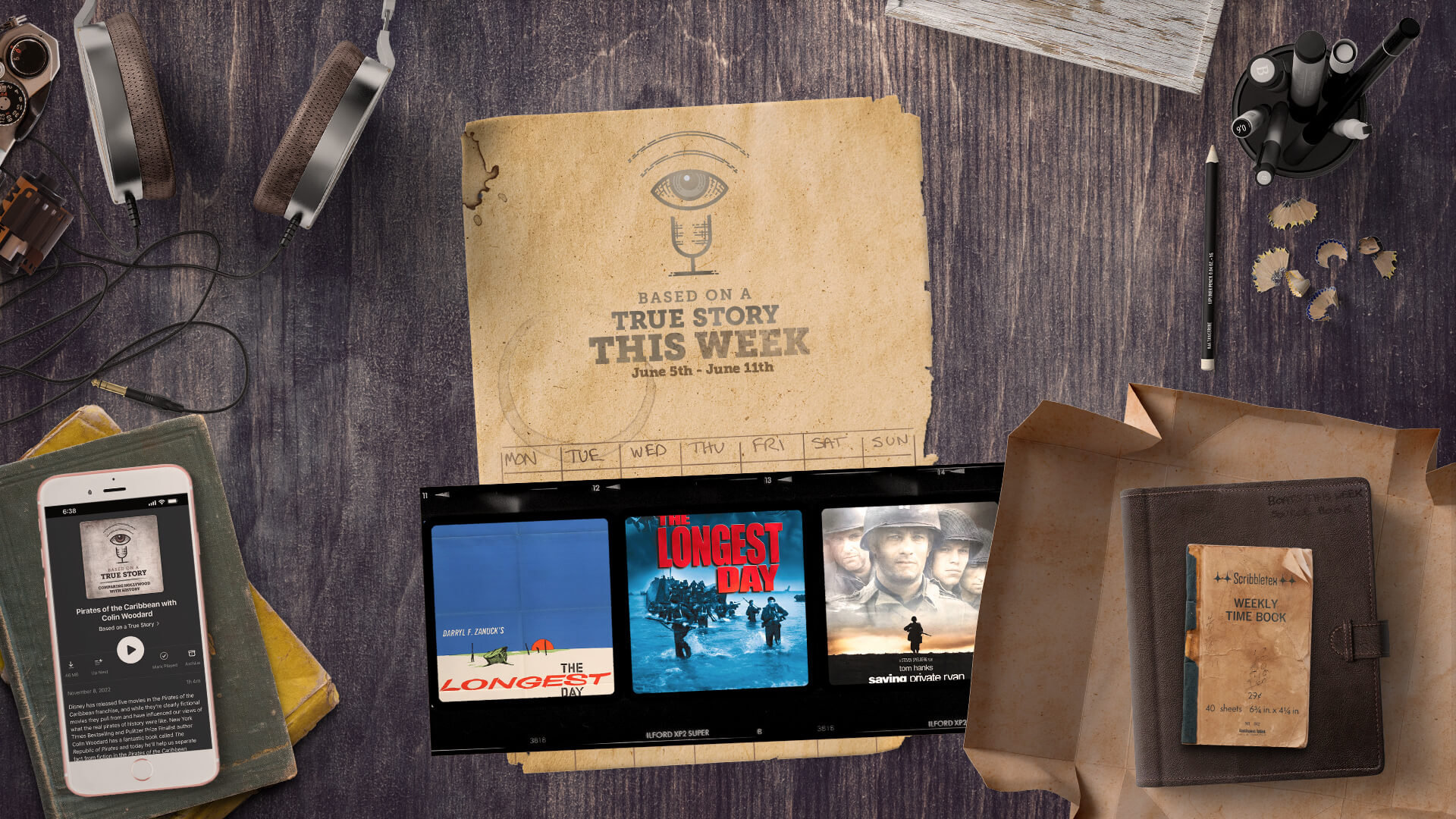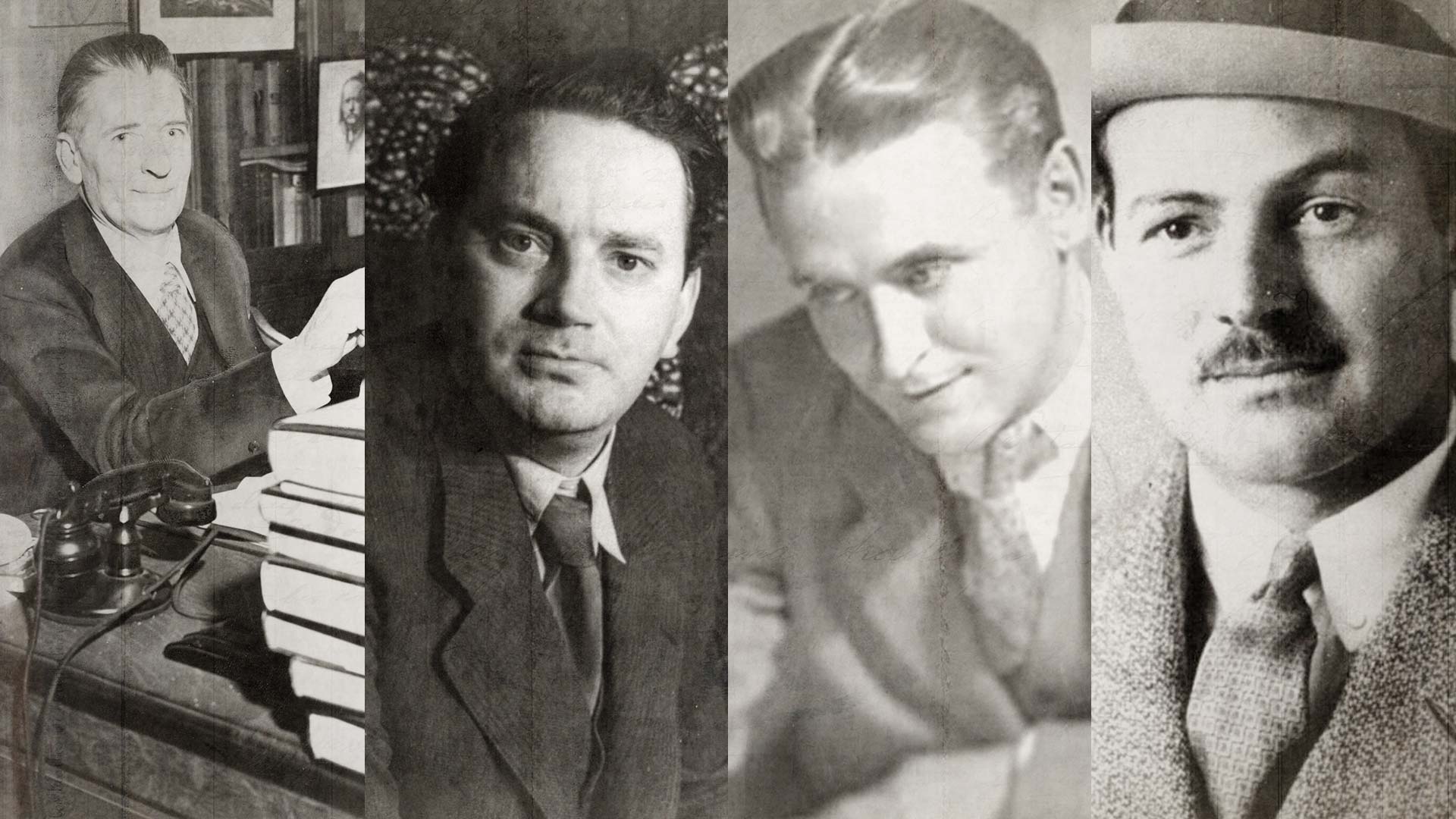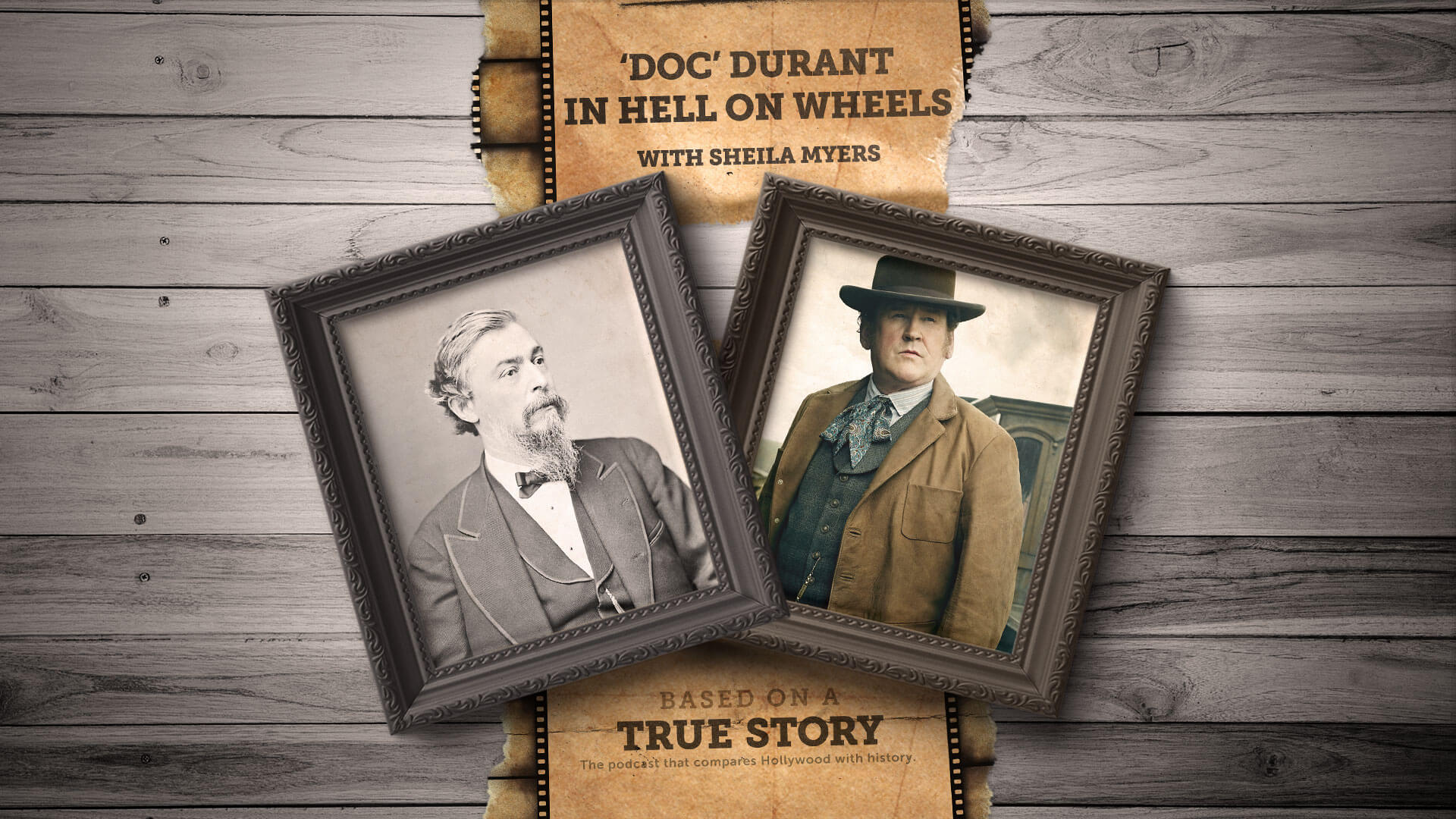For the week between January 16th to January 22nd, we’ll be learning about historical events that were depicted in El Chapo, La Révolution française and Zulu.
Did you enjoy this episode? Help support the next one!
Disclaimer: Dan LeFebvre and/or Based on a True Story may earn commissions from qualifying purchases through our links on this page.
Transcript
Note: This transcript is automatically generated. There will be mistakes, so please don’t use them for quotes. It is provided for reference use to find things better in the audio.
January 19th, 2001. Puente Grande Maximum Security Prison, Mexico.
A prison door clangs shut. Keys rattle as the guard locks it, then walks down the hall away from the camera.
In the next shot, two men clink together their glasses. One of the men tells the other about killing someone, then they embrace before he walks away. Left behind is Marco de la O’s version of Joaquin Guzman—better known by his nickname, El Chapo.
Cut to a laundry room in the prison. A man pushes a huge, white cart filled with laundry. A prison guard unlocks one of the gates as the man rolls the laundry cart through. In another room, El Chapo hastily takes off his prison clothes and puts on a police uniform from a plastic garbage bag. The man with the laundry cart opens an exterior door, the bright sun outside a stark contrast to the dark prison interiors.
Security cameras watch as the man pushes the cart through a door in the chain link fence.
Meanwhile, another man is making the rounds calling off the prisoner’s names in their cells. When they get to El Chapo’s cell, the man calls out his name: “Joaquin.”
No reply.
“Joaquin?”
Still nothing. He looks inside to find an empty cell.
All of a sudden, the prison is a flurry of activity. Armed police arrive to storm the prison and find the missing prisoner. When they do, El Chapo is already wearing a police uniform, and he fits right in with many of the other policemen wearing a mask over his face to conceal his identity.
The policeman who finds El Chapo pauses for a moment, then hands him a gun. Then, three of the police escort El Chapo through the prison to a waiting truck outside. He gets in and they drive away.
The depiction of this event comes from Netflix’s original series simply called El Chapo—and it is true that El Chapo escaped from the maximum-security prison where he was held on January 19th, 2001.
However, it wasn’t quite as dramatic as we see in the series.
In a great article for Time magazine by author Robert Saviano, he explains one of the possible reasons why the escape itself wasn’t quite as dramatic as the series makes it out to be.
You see, El Chapo had been running his cartel from behind bars in the prison since he’d arrived in 1995. He didn’t have any difficulty doing that, and it was only because there was a new law in the United States that might make it easier for him to be extradited that made him decide he couldn’t stay in prison anymore. It was time to escape, and he picked the evening of January 19th, 2001.
And the true story is that El Chapo enlisted the help of a man named Francisco Rivera—he’s the guy we see in the series pushing the laundry cart.
Rivera was a guard at the prison. He opened El Chapo’s cell door and helped him climb inside the cart of dirty laundry. Then, Rivera pushed the cart down empty halls—El Chapo had made sure all the guards involved were bribed quite well—and out into a parking lot. El Chapo hopped out of the cart and into the trunk of a waiting car. Then, Rivera got in the car and drove away.
If you want to watch the depiction of El Chapo’s escape this week, check out the Netflix series El Chapo. It’s shown in Season 2, Episode 2 and starts at about 10 and a half minutes.
Oh, and while this isn’t shown in the Netflix series because the timeline of that show ends in 2016, but it was also on the same day sixteen years after his escape: January 19th, 2017, El Chapo was extradited from Mexico to the United States.
As of this recording, he is currently serving life in prison without the possibility of parole at a federal prison in Colorado.
January 21, 1793. Paris, France.
We’re in a stone room.
Two men on their knees have their heads bowed as they pray. One of the men closest to the camera clutches a cross to his chest.
After a moment, the door opens behind them and a uniformed soldier steps in.
It’s time.
The men stand and walk out of the room, followed by the soldier.
Outside, we can see the men more clearly now. The one holding the cross is a priest while the other is King Louis XVI. He walks up to a carriage surrounded by soldiers.
Before getting in, he looks back up at the stone tower. From a barred window, a woman looks back down with a sad look on her face. After a brief moment, the carriage begins its journey down the street.
Soldiers line the street, making a pathway for the procession. Drummers beat their drums as they walk toward the camera. Behind them, the sound of horses can be heard clip-clopping on the stone street.
From afar we can see the procession arriving at its destination.
It’s a huge, public square filled with a massive crowd and lots of soldiers as well. In the middle, stairs lead to a platform. On the platform…a guillotine.
The carriage stops and Louis calmly gets out, standing before a man who just stepped down from the platform. “Citizen,” the man says, deliberately not acknowledging him as the king of France. Then, he instructs Louis to remove his coat. He does, handing it to another man standing there.
Then, his hands are bound behind his back, and he’s led up the stairs to the platform. He breaks free for a moment to address the crowd, announcing, “I die for all the crimes with which I am accused,” and going on to offer a pardon for those who are condemning him to death.
Then, drummers around the platform are signaled to start a drum roll. Louis is pulled away from his address to the crowd and laid down on the guillotine.
A moment later, the blade drops.
This scene comes from 1989 French film called The French Revolution, and it depicts an event that really did happen this week in history, although there is more to the story than what we see in the film.
A few days before the execution and also something that happened this week, on January 17th, 1793, the National Convention convicted King Louis XVI of high treason for a long list of charges.
To quote from 1793 book called The Proceedings of the French National Convention on the Trial of Louis XVI:
Louis, the French Nation accuses you of having committed a multitude of crimes to establish your tyranny, in destroying her freedom. You have, on the 20th of June, 1789, attempted the sovereignty of the people, by suspending the assemblies of their representatives, and driving them with violence from the places of their fittings.
And it goes on listing dozens and dozens of accounts of things Louis did that led to him being charged with treason. If you want to read them yourself, that book can be found for free on Google Books and you’ll find the section I quoted from with the charges starting on page 55.
They found him guilty, hence the execution that took place four days later.
The priest we saw in the movie really was there. His name was Henry Essex Edgeworth and was there for Louis to make his confession. The woman we see in the movie that Louis looks up at before getting in the carriage is his wife, Marie Antoinette. I couldn’t find anything to suggest he did that, but they were imprisoned at the same place so it’s possible.
The carriage left the courtyard at about 9:00 AM.
It took about an hour for the carriage to make its way to the largest public square in Paris called Place de la Revolution—although now it’s called Place de la Concorde.
The drummers we see going along with the carriage really were there, although in the movie it seems almost to be more of a funeral procession and their real purpose was to make noise and drown out any supporters of the king who might be shouting at the soldiers along the way.
That’s also why we saw the line of soldiers on either side of the street. The movie makes it almost look like they’re standing their out of respect for the king, but they were really there to make sure no one tried to stop the execution from happening. There were about 80,000 soldiers who lined the streets of Paris along the route.
And although we don’t see it in the movie, there was an attempt to save the king by some of his supporters. But that was quickly squashed.
At about 10:00 AM, the carriage arrived. A crowd was there to witness the event.
Being called a citizen was something that happened, too, although I’m not sure if it happened when we see it in the movie. But it is true that Louis was officially tried and convicted not as King Louis XVI but as Citizen Louis Capet.
The bit we see in the movie where the king tried to give a long speech also actually happened. He got some of it out but, just like we see in the movie, the order was given to drown out his voice with drummers and the execution continued.
In 1815, the priest who served as Louis’ confessor before the execution published his memoirs of the event. This is what he had to say about it:
The path leading to the scaffold was extremely rough and difficult to pass; the King was obliged to lean on my arm, and from the slowness with which he proceeded, I feared for a moment that his courage might fail; but what was my astonishment, when arrived at the last step, I felt that he suddenly let go my arm, and I saw him cross with a firm foot the breadth of the whole scaffold; silence, by his look alone, fifteen or twenty drums that were placed opposite to me; and in a voice so loud, that it must have been heard at the Pont Tournant, I heard him pronounce distinctly these memorable words: “I die innocent of all the crimes laid to my charge; I Pardon those who have occasioned my death; and I pray to God that the blood you are going to shed may never be visited on France.
If you want to watch the depiction of the event this week, check out the 1989 movie simply called The French Revolution. Although the whole thing is 5.5 hours long and it’s actually in two parts, so look for the second part with the subtitle Years of Rage.
But, if you’re like me and don’t speak French, then it might be tough to understand without subtitles. So, if you’d prefer, you can also see other depictions of events leading up to and around the execution by watching some of the movies centering around Louis’ wife, Marie Antoinette.
They don’t really show the execution itself, but they’re still set around the same time period of course.
For example, there’s the 2006 movie simply called Marie Antoinette—although that movie doesn’t show the execution of her husband. Nor does the 1938 movie of the same name, although it shows from her side in prison as she looks out the window at what we can assume is her husband riding off in the carriage.
There’s also a new series about Marie Antoinette that started last year, but as of this recording, the timeline of that series hasn’t made it to Louis’ death yet.
Oh! And as one last little historical note—nine months after Louis was executed, Marie Antoinette was also executed in the same public square.
January 22nd and 23rd, 1879. South Africa.
Our next movie opens with huge text that says: January 23rd, 1879.
Then, the opening shot in the movie is a letter that talks about the events that happened the day before.
The movie slowly zooms in on the letter as a narrator explains it’s sent to the Secretary of State for war from the Commander in Chief of Her Majesty’s forces in Natal colony, South Africa.
Then, reading the letter, “I regret to report a very disastrous engagement which took place on the morning of the 22nd January, between the armies of the Zulu King Cetshwayo and our own Number 3 Column, consisting of Five Companies of the 1st Battalion, 24th Regiment of Foot, and One Company of the 2nd Battalion, a total of nearly 1,500 men, Officers and other Ranks. The Zulus, in overwhelming numbers, launched a highly disciplined attack on the slopes of the mountain Isandhlwana, and in spite of gallant resistance, the Column was completely annihilated.”
Then, the sound of burning fire can be heard as we’re transported to the battlefield. Flames are eating away at what remains of wagons, carts and other military equipment. The grounds are littered with the red uniforms of dead soldiers.
After this, the rest of the movie takes place on January 22nd and 23rd, so we won’t cover the entire thing here—maybe that’ll be a regular more in-depth episode of Based on a True Story in the future.
But, if we fast forward to about 2 hours and 10 minutes into the movie, at the very end we get some more narration that says in the 100 years since the Victoria Cross was created for valor and extreme courage, only 1,344 have been awarded. 11 of them were given to the defenders of the mission station at Rorke’s Drift, Natal, January 22nd to the 23rd, 1879.
That last little bit of narration in the movie highlights the significance of the event. By that, what I mean is that the events of the 22nd and 23rd of January are to date the most ever Victoria Crosses being awarded for a single action to a single unit, with that unit being the 24th Regiment of Foot. They were awarded seven of the 11 total Victoria Crosses the movie mentions—four given to other unit—when about 150 British soldiers defended the station against over 3,000 Zulu warriors.
If you want to watch the event this week, check out the 1964 movie Zulu.
Share this:
- Click to share on Twitter (Opens in new window)
- Click to share on Facebook (Opens in new window)
- Click to share on Reddit (Opens in new window)
- Click to share on Pocket (Opens in new window)
- Click to share on LinkedIn (Opens in new window)
- Click to share on WhatsApp (Opens in new window)
- Click to share on Telegram (Opens in new window)
- Click to email a link to a friend (Opens in new window)
- Click to print (Opens in new window)



